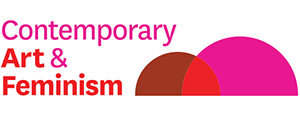Round Table 1, was held at Union House, Melbourne University on March 16, 2019.
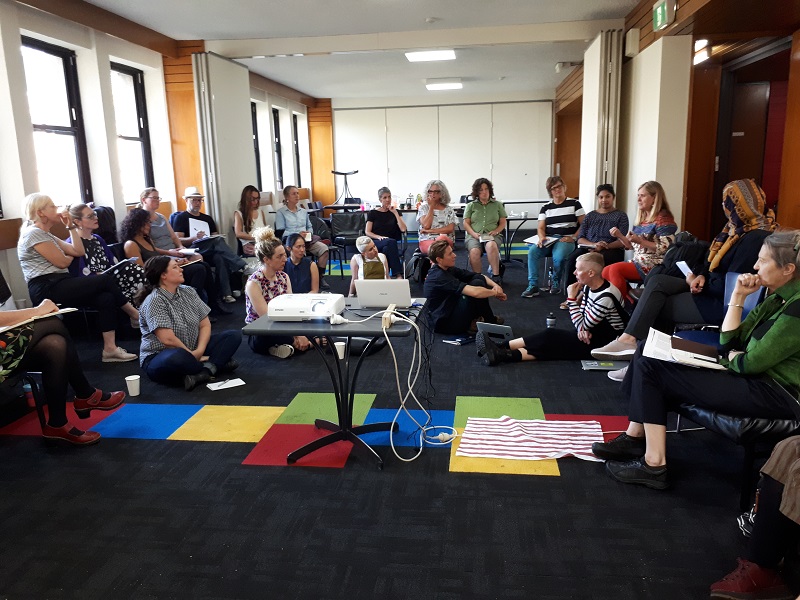
25 artists and researchers attended and gave short presentations on their work in relation to Care, facilitated by Assoc Prof Jacqueline Millner;
Hadeel Abdelhameed, Kylie Banyard, Virginia Barratt, Catherine Bell, Jessie Boylan, Sophie Constantine, Gretchen Coombs, Filomena Coppola, Jodie Goldring, Anne Griggs, Linda Judge, Katie Lee, Sara Lindsay, Joanne Makas, Rebecca Mayo, Bon Mott, Kelum Palipane, Jane Polkinghorne, Rebekah Pryor, Sara Rudledge, Ema Shin, Jennifer Tan, Hartmut Veit, Philippa Veitch, Caroline Wallace and Jude Walton.
Thanks to Sandra Bridie and George Paton Gallery for their support with this event.
Please scroll down for images and artist information, in alphabetical order, and return to this page for continuing updates:
Hadeel Abdelhameed is a theatre scholar who has recently completed her PhD with La Trobe Theatre and Drama. Her research undertook a comparative study of Iraqi and Australian representations of gendered concepts of war. She is interested in developing new languages for cross-cultural understanding to promote sensibilities more caring of others.
Kylie Banyard is an artist and educator based in Bendigo at La Trobe University Visual Arts. Her painting practice investigates alternate models for living and learning. Banyard has recently explored and brought to a new audience the radical pedagogies of American mid-20th century art school Black Mountain College. Those pedagogies are based in practices of care for others, the development of the whole person, and care for community and environment.
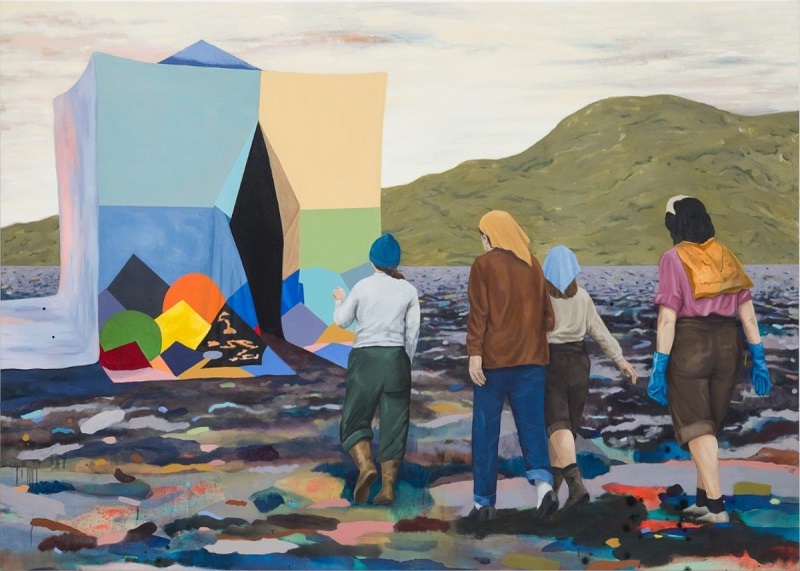
Image: Kylie Banyard, The Pilgrimage, 2018, oil and acrylic on canvas, 183 x 213 cm. Courtesy of the artist and Galerie pompom
Virgina Barratt (based in Sydney, undertaking a PhD at Western Sydney University) and Jessie Boylan (based at Bendigo La Trobe Visual Arts) are artists who have solo as well as collaborative practices, brought together by their common interest in how to work through anxiety and panic in creative ways. Through poetry, performance, video and photography, they seek a way of being in which care is prioritized, where we can be at the same time unmade and robust.
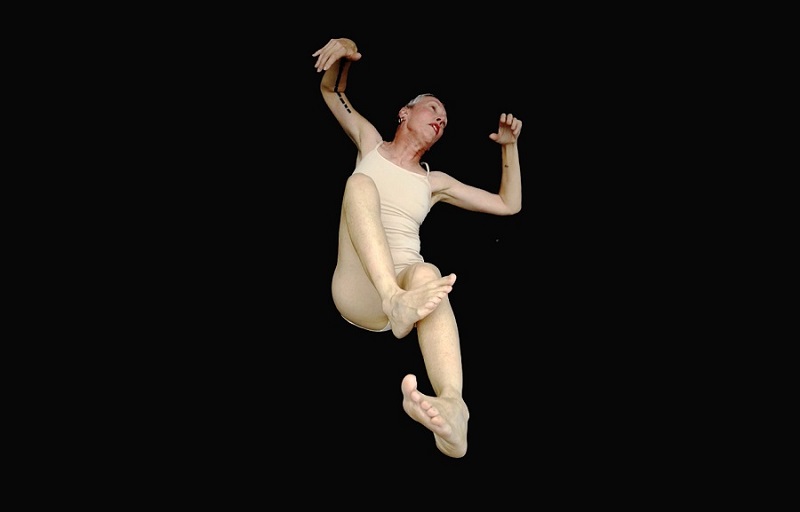
Image: Rupture 2018 multi-channel video & sound installation 13 minutes. This work is a collaboration between Jessie Boylan, trauma-informed psychotherapist Jenna Tuke, digital media artist Linda Dement and writer and performer Virginia Barratt. Courtesy of the artists.
Catherine Bell is a is a multi-disciplinary artist and Associate Professor in the Faculty of Education and Arts, Australian Catholic University. In her recent work she has collaborated with Arts Project Australia and artist Cathy Staughton, and led art in health projects in the Oncology ward at St Vincent’s Hospital and Caritas Christi Hospice in Melbourne. These projects challenge taboos surrounding death and dying, and involve ‘facing death creatively’.
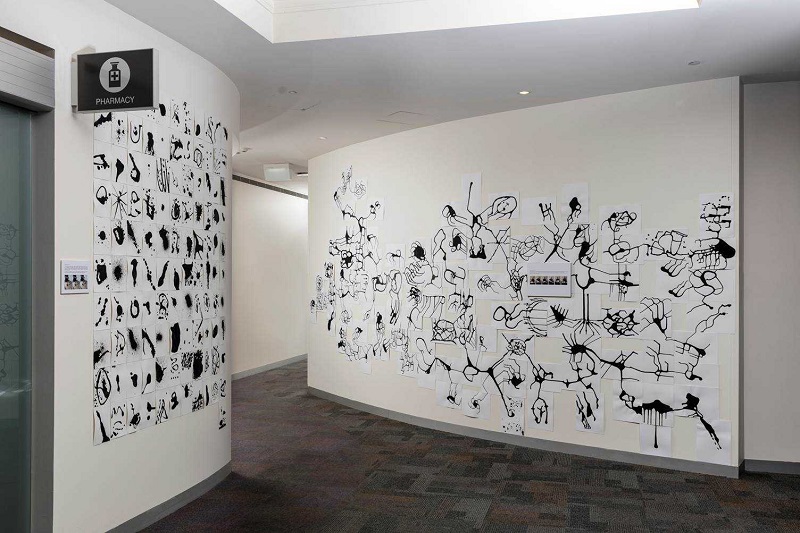
Image: Catherine Bell, (L to R) Marking Time (2017) and Mapping in Memoriam (2017). Installation view. St Vincent’s Private Hospital. Courtesy of the artist and Sutton Gallery. Catalogue available here.
Sophia Constantine and Jennifer Tan collaborate as WOG (Western Oriental Girl), and are Melbourne-based artists who work in disability, performance, poetry, theatre and set design. Through various modes, including neo-burlesque, WOG seek to challenge the perception of visual stereotypes of sexuality and cultural identity, foregrounding their care for each other.
Gretchen Coombs is a writer, theorist and Postdoctoral Fellow in creative industries at RMIT. Her research suggests that gestures of care — including those rooted in domestic labour and health care — are at the heart of social practice. In particular, she is interested to explore how the aesthetics of social practice is constituted in relations.
Filomena Coppola Filomena Coppola is a Melbourne-based artist, originally from Mildura and raised in an Italian family. Her art practice examines the complexities of duality and what it is to navigate a journey between two cultures. Her most recent sculptural work uses found objects and elements of nature, imbued with personal narrative, to explore a sense of place.

Image: Filomena Coppola, j,k,w,x,y 2019, gum leaves, cotton, found objects. Courtesy of the artist.
Jodie Goldring is an artist and educator who works with primary school students, young adults with disabilities, and community groups of all ages. She is committed to promoting individual and social well being through collective art-making practices, and values local community projects as drivers of lasting and meaningful connection. Her most recent projects include an Artist Residency for Glenlyon Biolink Walking Trail during November 2018, where plants along the walking trail were used in a number of weaving related workshops and art making.
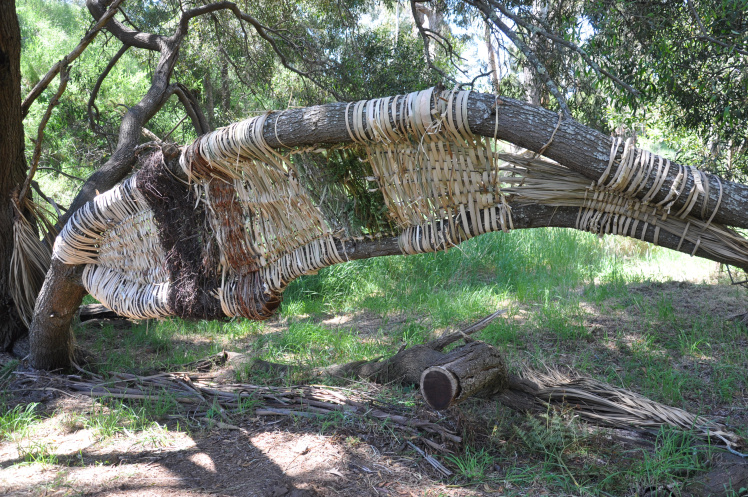
Image: Jodie Goldring, Work in situ, Artist-in-Residence project 2018. Glenlyon Biolink Walking Trail, Loddon River, Victoria. Courtesy of the artist.
Linda Judge is a Melbourne-based artist and educator working with legacies of care and loss. Her works have included The Emotional Life of Objects, where she painted all the books of her recently departed partner, and sitting within and painting the intimate spaces of one’s private life, such as teenage bedroom and therapy rooms. She also teaches art to the aged in community settings.

Image: Linda Judge, Daily Bread, 2018, recycled plastic, found object. Courtesy of the artist.
Katie Lee is a Melbourne-based artist. Her recent work has examined exhibition-making as a process of attention to detail and taking care in relationships between materials, people, space and architecture. She uses this framework as the basis for decision making in the exhibiting of works, the choices of materials, the development of choreography, interventions and the actions performed, to reveal the embodied knowledge and gestures of ‘work’.

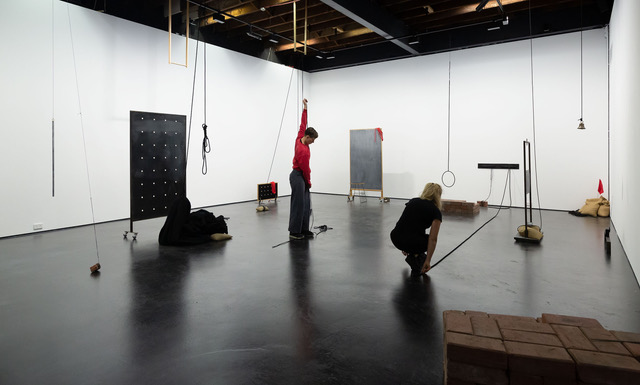
Image: Katie Lee, 'Set/Reset (Performances with No-one Watching)' (2017-2019), bronze, bricks, broom, chalk, chalkboards, found-objects, mirror, timber, steel, radio, rope, live performance. Photo Credit: Christian Cappuro
Sara Lindsay is an artist, curator and educator, and founding weaver of the Australian Tapestry Workshop. She suggests that ‘the most important part of tapestry work is that it’s collaborative’. In recent years, she has collaborated with Karen refugees from Myanmar - teaching them weaving, mentoring and mediating exhibition opportunities for their work. Sarah continues to run the program on her own time and resources, with ‘joy’ as the driving energy. Sarah’s mantra is ‘slowly, slowly’.
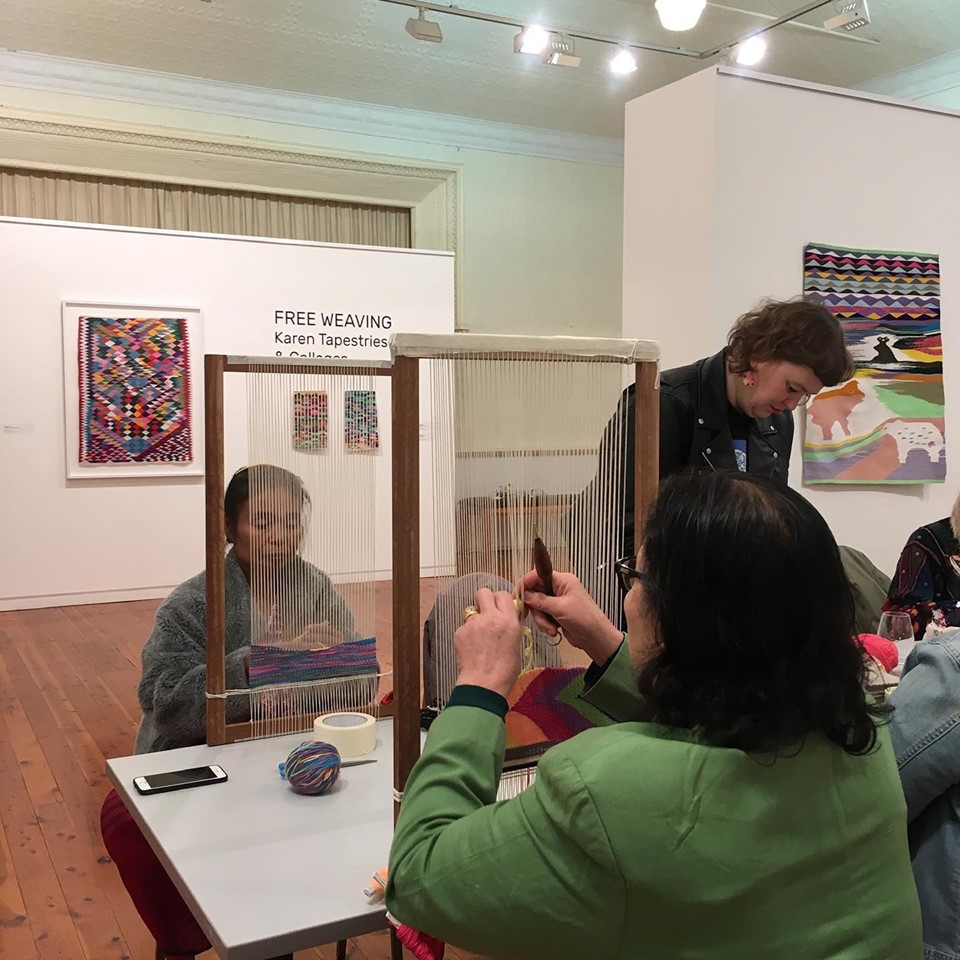
Image: Weaving Day workshop at Wangarratta Art Gallery, during the exhibition Free Weaving - Karen Tapestries and Collages. (Weavers pictured; Shuklay Tahpo and Munaw Poe). Image courtesy of Sara Lindsay.
Joanne Makas is a Sydney based artist and curator, and currently Programming and Managing Director at STACKS Projects ARI in Sydney. Her work is informed by the notions of vulnerability, entanglement and relations as activism, as articulated for example in the theories of Judith Butler. She is interested in Care as an ethics of practice to forge new ways of Being and bringing the body to the forefront of practice.

Image: Joanne Makas, Peach Perfection, 2018, video still. Courtesy of the artist.
Rebecca Mayo is an artist and educator based between Melbourne and Canberra, at ANU School of Art & Design. Her diverse practice has in recent years focused on gestures of care for local environments, whereby communities are brought together to remediate, record and advocate for damaged environments.
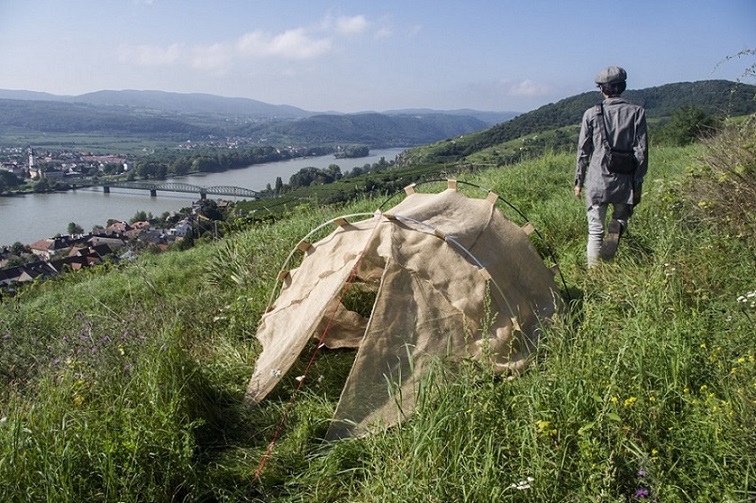
Image: Rebecca Mayo, After Carl von Hugel Tent No.1 installed above Stein an der Donau, 2014. Hessian , tent poles, rope, collected rubbish. 190x200x95cm approximately. Courtesy of the artist.
Bon Mott is a Melbourne-based non-binary artist, curator and Director of 2SP (Second Space Projects), an ARI that highlights non-binarism and inclusiveness as an alternate mode of being. Mott is a current PhD candidate at Victorian College of the Arts, University of Melbourne, researching the performativity of lightning as the embodiment of energy and the intangible, informed by New Materialism and First Nations knowledge.

Image: Bon Mott, Bonfire Touch Too Much,2019, Performance Incinerator Gallery, Duration 6 minutes, Sound Collaboration Jonathon Griggs, Documentation Amanda Fordyce. Courtesy of the artist.
Kelum Palipane is an architect and theorist based at University of Melbourne, Melbourne School of Design. One area of interest in her research are the placemaking practices of multicultural communities, for example, how people occupy space multimodally and how people bring specific approaches to space and time based on their different cultural backgrounds and values. Her research aims to facilitate such place-making practices based on caring for the cultural diversity of all participants.
Her recent publications include: Kelum Palipane (2019): Multimodal mapping — a methodological framework, The Journal of Architecture, DOI: 10.1080/13602365.2018.1527384
Jane Polkinghorne is an artist and lecturer currently based in Mildura, with a practice of over twenty years across a range of mediums, including film/video, photography and sculpture. Her practice is a critical and humorous examination of pathos and horror surrounding representations of the gendered body. She has received a PhD from Sydney College of the Arts, investigating humour and disgust in relation to contemporary art. Her interest in the Care project is interdisciplinary research related to women and ageing.
Rebekah Pryor is a Melbourne-based artist working with feminist theologies, informed by theorists Luce Irigaray and Catherine Keller. Her interdisciplinary arts practice explores the spatial and iconic potential of the body and its ‘divine entanglements’, through gestures of love, practices of care, as well as modes of self-affection.
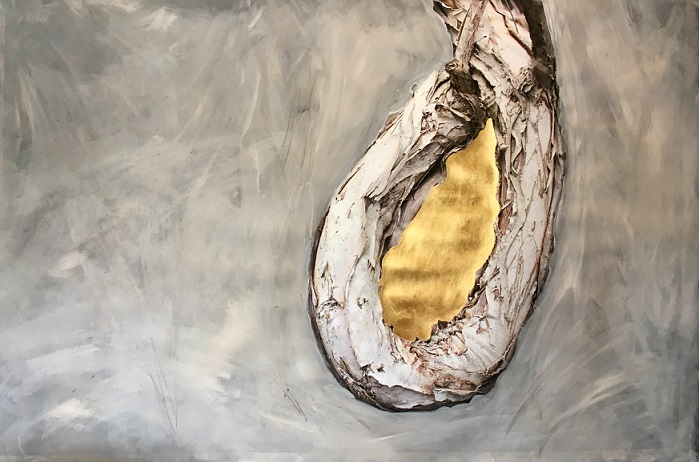
Image: Rebekah Pryor, Horizon, 2017, mixed media. Courtesy of the artist.
Anne Riggs is an artist and community facilitator based in Melbourne who works with the South Eastern Centre Against Sexual Abuse (SECASA) based at Monash University. She facilitates working through the trauma, loss and grief of sexual assault through art-making so survivors can access new languages and contexts to tell their stories. Anne is passionate about creative collaboration and practice to effect change, to nurture individual and community desire, and to foster wellbeing.
Sara Rudledge is a Melbourne-based artist whose practice focuses on the body, and more recently has engaged with waste and what is socially rejected. Some of her performances have entailed sitting with piles of rubbish in public spaces, running where you are not supposed to, and wearing nothing but donated clothing for a month at a time.
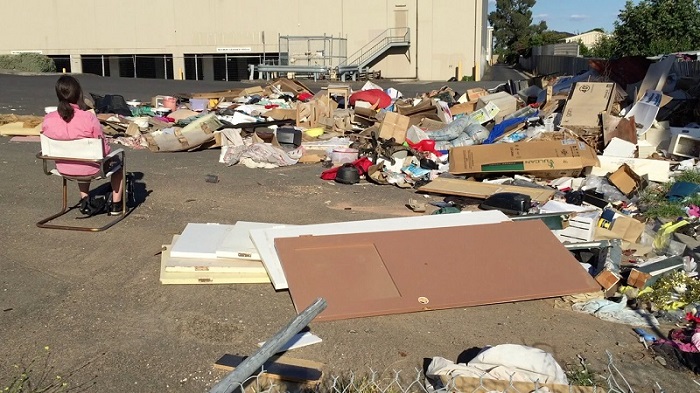
Image: Sarah Rudledge, The Pile, 2016, single channel video, 6min Image Still. Courtesy of the artist.
Ema Shin is an award winning artist with a Japanese/Korean background who works with mixed media, including embroidery and Japanese printmaking. She finds that living in Australia has given her more voice as a woman, as she observed that the concept of gender equality is not widely accepted in Japan. In particular she explores the challenging experience of being a ‘mother-artist’, an experience she is keen to explore collaboratively.

Image: Ema Shin, Soft Alchemy (My Pelvic Bone), 2018, Cotton, wool, wire / woven tapestry, 50cm x 42cm x 3cm. Photographer: Oleksandr Pogorilyi
Hartmut Veit is a Melbourne-based artist and ex-nurse who works as a disability carer and handyman to sustain his practice. Much of his work has been in response to the community at Morwell in Victoria’s La Trobe Valley, focused on the politics of coal as they intersect with practices of care. Inspired by Mierle Laderman Ukeles and historical eco-feminist art performances, Hartmut’s latest body of works reinterpret physical actions of maintenance, repair, renovation and building normally associated with handyman ‘odd jobs’ as artistic labour to create artifacts and gestures of care towards ecological restoration, nurturing and care for the earth.

Image: Hartmut Veit, Angle grinding brick wall to install new dual flush toilet cistern, 2018, Photographic print. Courtesy of the artist.
Philippa Veitch is a Sydney-based artist, educator and currently local councillor. As a passionate advocate for the arts and their relevance in all spheres of life, and a card-carrying member of the precariate, Philipa believes ‘art saves your life’. She wants to encourage artists to ‘take their concerns to the centre’, to enter conventional politics in order to transform it.
Caroline Wallace is an art historian and educator based in Bendigo at La Trobe University Visual Arts. Her research focuses on 1970s conceptual practices, their effect on curating, as well as their manifestations in contemporary art. She is interested to critique what she calls ‘the resistance to taking care’ in certain lionized contemporary art curatorial practices which pay little heed to the communities and locales in which they take place, and to explore alternative models.
Jude Walton is a Melbourne-based artist whose multi-diverse practice includes performance, dance and site-specific responses. She is interested to find different ways of working as an artist where care for self is central, to develop safe and caring spaces for creativity given that creativity demands risk-taking, and to challenge competitiveness as a default setting for interacting with others while seeking ‘success’. She is currently researching the relevance of the concept of ‘the muse’ to contemporary gender relations.
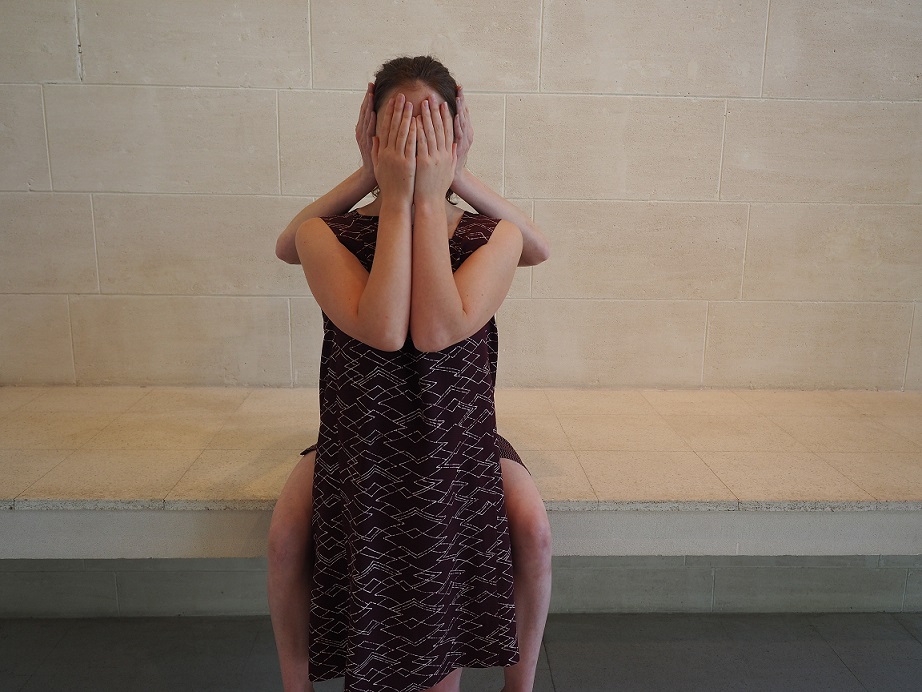
Image: Jude Walton, Lehte II at Heide Museum of Modern Art 2015. Courtesy of the Artist.

